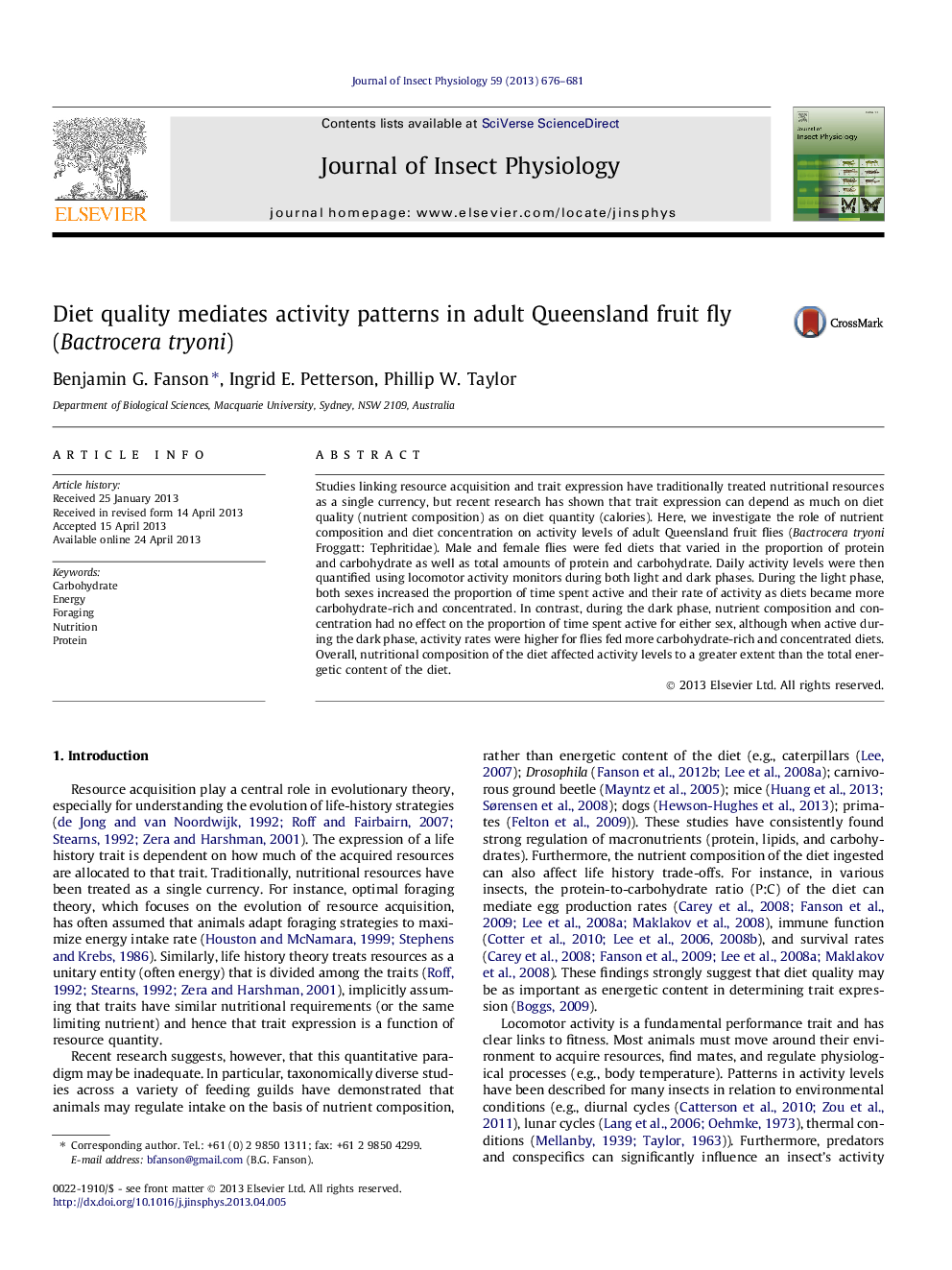| Article ID | Journal | Published Year | Pages | File Type |
|---|---|---|---|---|
| 2840585 | Journal of Insect Physiology | 2013 | 6 Pages |
•We examined the effects of protein and carbohydrate concentrations on activity patterns in the Queensland fruit fly.•Increasing carbohydrate levels of the diet increased activity.•Increasing protein levels of the diet decreased activity.•Protein:carbohydrate ratios had a stronger effect than total diet concentration on activity.
Studies linking resource acquisition and trait expression have traditionally treated nutritional resources as a single currency, but recent research has shown that trait expression can depend as much on diet quality (nutrient composition) as on diet quantity (calories). Here, we investigate the role of nutrient composition and diet concentration on activity levels of adult Queensland fruit flies (Bactrocera tryoni Froggatt: Tephritidae). Male and female flies were fed diets that varied in the proportion of protein and carbohydrate as well as total amounts of protein and carbohydrate. Daily activity levels were then quantified using locomotor activity monitors during both light and dark phases. During the light phase, both sexes increased the proportion of time spent active and their rate of activity as diets became more carbohydrate-rich and concentrated. In contrast, during the dark phase, nutrient composition and concentration had no effect on the proportion of time spent active for either sex, although when active during the dark phase, activity rates were higher for flies fed more carbohydrate-rich and concentrated diets. Overall, nutritional composition of the diet affected activity levels to a greater extent than the total energetic content of the diet.
Graphical abstractFigure optionsDownload full-size imageDownload as PowerPoint slide
